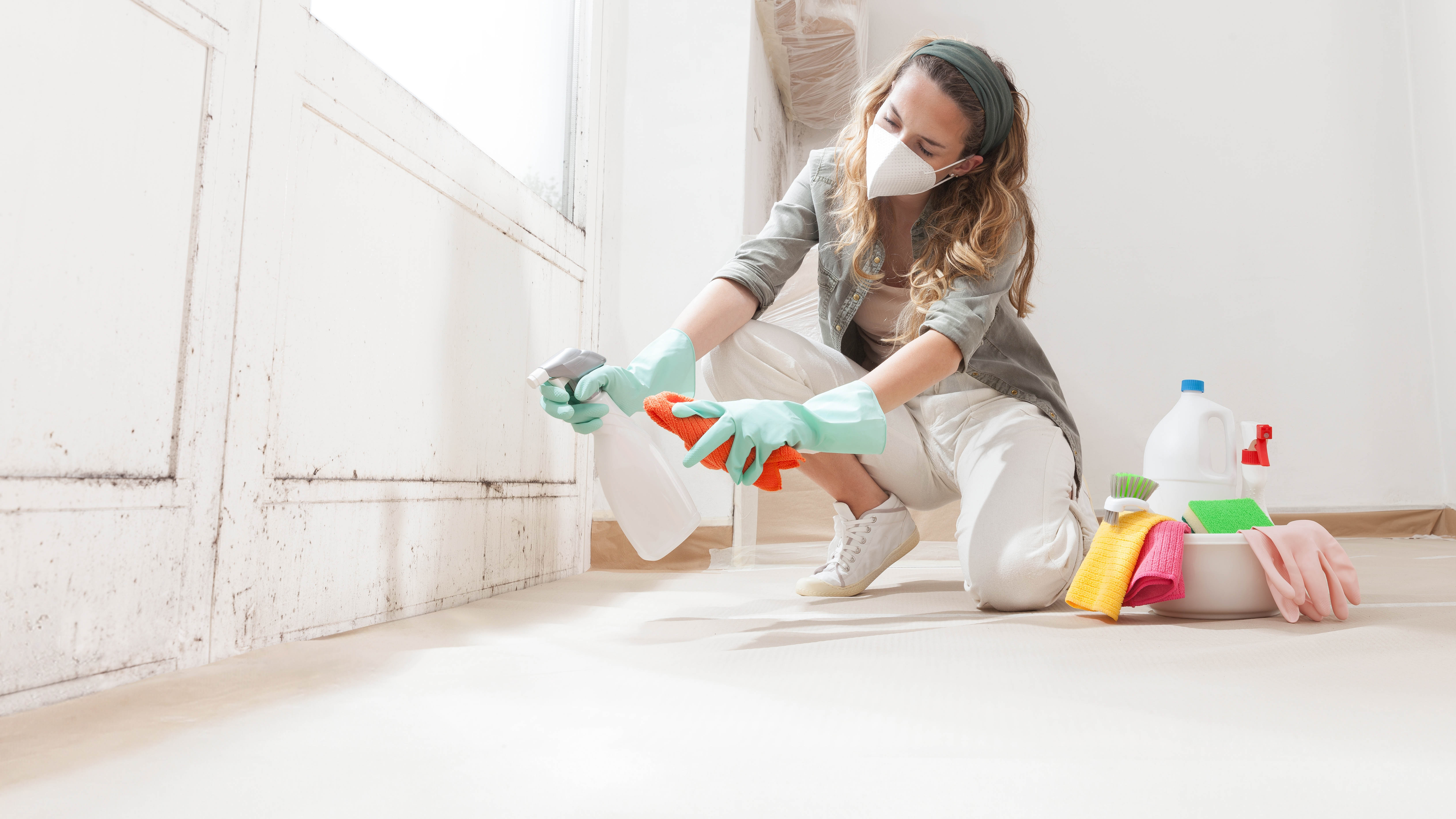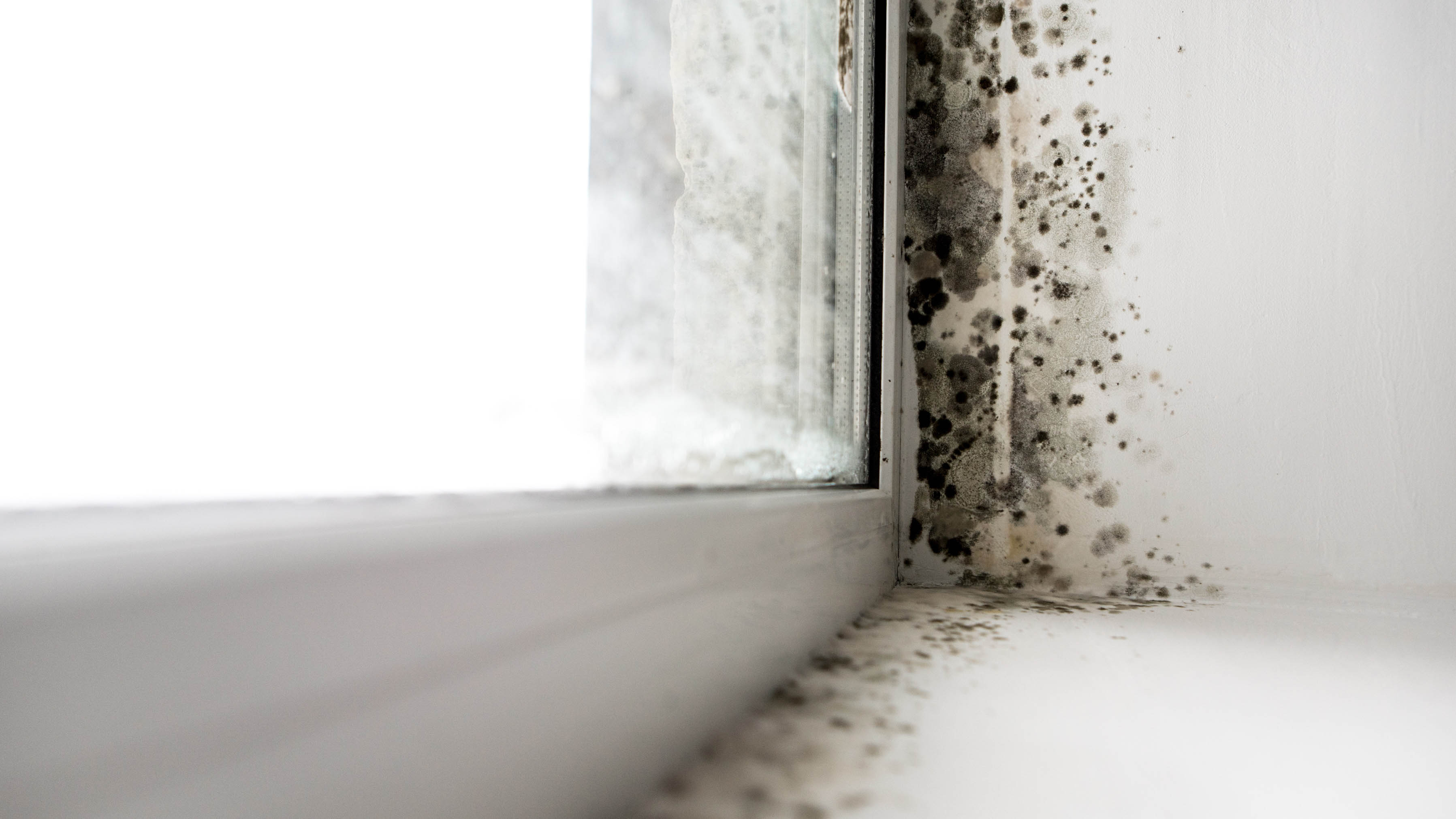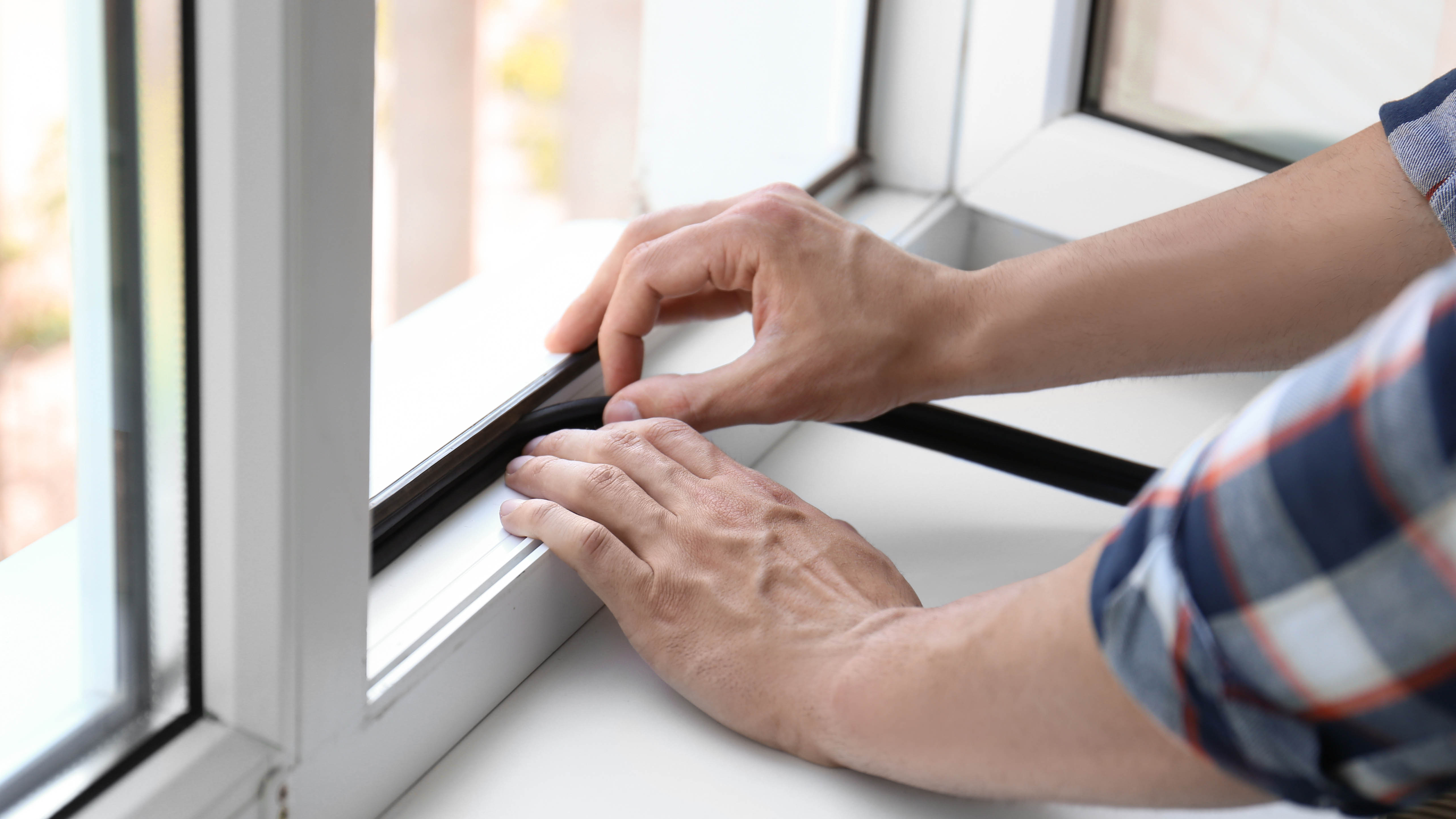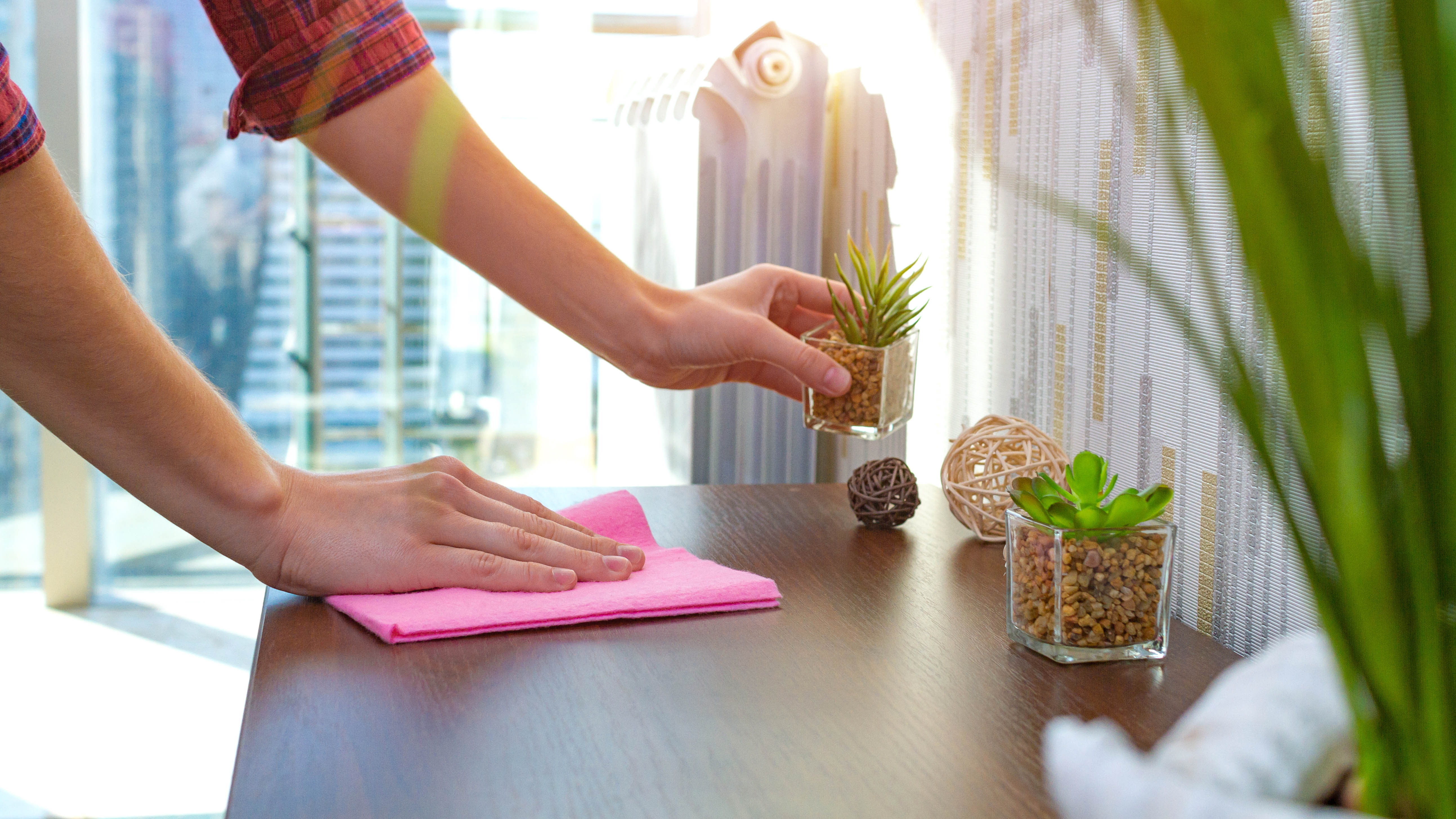Mold vs. dust: How to tell the difference and remove both from your home
Experts weigh in on mold and dust prevention and removal

Mold and dust are unsightly in your home, and they can also be harmful to your health. Both dust and mold particles can cause respiratory problems—especially for those with preexisting conditions like asthma and allergies. But sometimes, it can be hard to tell whether it’s mold or dust causing your symptoms. So, when comparing mold vs. dust, how can you know the difference and remove them from your home?
Luckily, we've asked two experts to answer our pressing questions. Here’s what they told us about how to prevent and treat mold and dust in your home.
Mold vs. dust: What’s the difference?
Before treating a problem, you need to know what the problem is. So, what’s the difference between mold and dust?
Mold is a natural organism that belongs to the fungi family. In nature, mold helps break down organic material, like fallen leaves and dead trees, turning them into leaf mold or dirt. But while mold is good for nature outside, it’s not great when growing in your house.
“Mold has a significant impact on a home,” says Michael Rubino is a mold and air quality expert, founder of HomeCleanse, and chair of Change the Air Foundation. “As a natural decomposer, this organism will eat through various home materials, causing significant structural damage. That’s not the main issue, though. The health impact this organism causes is what’s truly the problem.”
On the other hand, dust is made from dead skin cells, dust mite body fragments, and droppings. In addition to looking unsightly in your home, dust can contribute to poor indoor air quality, exacerbating symptoms for those with allergies and asthma.
“Dust is typically grayish or white and looks dry and like fine sand, while mold varies in color—ranging from green and black to yellow or orange—and often has a fuzzy or slimy texture,” explains Rubino. “Mold also thrives in damp environments, spreading from one area and growing outwards across the surface. Dust, on the other hand, accumulates upwards as it builds up. Additionally, mold often produces a distinct musty, earthy cigar-like odor. Dust is typically odorless and feels ‘stale.’”
Sign up to get the BEST of Tom's Guide direct to your inbox.
Get instant access to breaking news, the hottest reviews, great deals and helpful tips.
Mold vs. dust: Prevention

Now you know how to tell mold and dust apart, you’ll be better prepared to prevent them both from accumulating or growing in your home.
How to prevent mold
Mold is a natural occurrence in the environment, so it’s impossible to prevent exposure completely. However, with a few simple steps, you can prevent mold from growing inside your home.
“The main goal of mold prevention is to reduce moisture and eliminate particles such as mold spores and organic matter from the home,” states Rubino. He suggests several ways to prevent mold from growing in your home, including regular cleaning.
It’s also essential to manage humidity levels and airflow to prevent mold. “Focus on airflow in high-moisture rooms like the kitchen and bathrooms by turning on the exhaust fans and cracking a window or door. Hang up bath mats, towels, loofahs, and other wet shower items so they can thoroughly dry.” Don't forget, mold is one of the main reasons why people invest in the best dehumidifiers.
You can also tackle some home maintenance projects to prevent mold in your home. “Fix structural issues with the home quickly to avoid moisture intrusion. Keep gutters clean and ensure they are properly installed and working correctly.” If you ignore a leaky roof or siding, water can seep into the structure of your home, cause mold growth, and damage the home’s structural integrity. And if your landscaping isn’t properly graded, water can pool near the foundation and cause water damage and mold.
Finally, Rubino offers some tips for preventing mold in your home. “Ensure that all exhaust systems vent outside of the home,” he advises, and “Avoid leaving wet clothes in the laundry.”
How to prevent dust

Like mold, dust is impossible to keep out of your home completely. However, it’s possible to prevent excessive dust buildup by regularly and thoroughly cleaning your home.
“Dust is made up of pollen, dirt, fibers, hair, skin cells, and dust mites, which feed on these particles,” explains Marla Mock, president of Molly Maid, a Neighborly company. She recommends several actions to keep dust under control in your home.
Mock explains that leaky windows and doors could cause excess dust in your home. “One of the main causes of dust buildup is outside particles entering through gaps in windows and doors. If you’re struggling with excessive dust, the first step is to inspect these areas and seal any leaks or gaps.”
Using doormats by exterior doors and removing shoes can also prevent dust buildup in the house. “Dust can be tracked in from shoes. Placing a doormat at entrances and removing shoes before entering can help minimize indoor dust.” Mock also recommends changing your home’s air filter every three to six months or more often in homes with pets or where residents have allergies, and investing in a good air purifier.
Mold vs. dust: Removal

Even with prevention, dust can build up, and mold spores can grow. If you find excessive dust and mold in your home, here’s how our experts recommend removing them.
How to remove mold
Depending on the situation, mold can be easy or extremely difficult to remove. “The key to eliminating mold is proper protocol,” explains Rubino. “Successful remediation should fix the source that led to the growth in the first place, remove the actively growing mold, and eliminate all contamination present in the issue.”
Successful remediation should fix the source that led to the growth in the first place
If the mold is minor or only covers a small area, you can remove it yourself. “Professionals should automatically handle anything larger than 10 square feet. To properly remediate, all of the contamination must go. This includes the colony, roots, dead mold particles, mycotoxins, and any bacteria present.” If you hire a pro, you can be confident the mold has been completely removed, whereas if you do it yourself, you might miss some areas and see regrowth. “If all these boxes aren’t checked, the mold colony could still be there, and the indoor space will continue to be packed full of harmless microscopic particles."
After addressing the area where the mold is growing, you’ll need to treat the rest of your home as well. “As long as the colony grew, it released microscopic particles into the surrounding environment,” Rubino explains. “Eliminating these particles will help make the home a safe space again and improve the indoor air quality.”
How to remove dust
So what is the best way to get rid of dust? “Dusting is simple, but using the wrong tools can make it less effective,” says Mock. “Some dusting cloths and wands leave lint and dust particles behind, while dry cloths push dust around or create static that attracts even more dust.”
She recommends using a damp microfiber cloth instead. “Lightly mist a clean microfiber cloth with water. It picks up dust effectively without leaving lint behind.” Dusting is also recommended before you vacuum. “As you dust, particles of dirt and dust fall to the floor, so vacuuming afterward prevents cleaning the same area twice.".
Similarly, Mock advises working from top to bottom when dusting. “Start dusting higher surfaces and move downward to prevent recontamination. Try to make gravity your friend rather than your enemy.”
Lightly mist a clean microfiber cloth with water. It picks up dust effectively without leaving lint behind.
Finally, Mock suggests stocking your cleaning closet with a few staples. “Dryer sheets attract static electricity, making them great for dusting TV screens and computers. While lint rollers work well for cleaning lampshades.
“Use a soft, dampened paint brush to clean slatted doors, keyboards, and intricate furniture,” Mock recommends. “[And] dust mops are best for hardwood floors, reaching areas a vacuum might miss. Synthetic fiber or cotton covers are both effective.”
More from Tom's Guide

Catherine Hiles has over a decade of experience writing and editing on various topics, including home improvement, personal finance, home finances, pet ownership, and parenting. Her work has been featured on BobVila.com, TIME Stamped, The Penny Hoarder, and more. In her spare time, Catherine enjoys running, reading, spending time with her kids and dogs, and tackling projects around the house.
You must confirm your public display name before commenting
Please logout and then login again, you will then be prompted to enter your display name.
